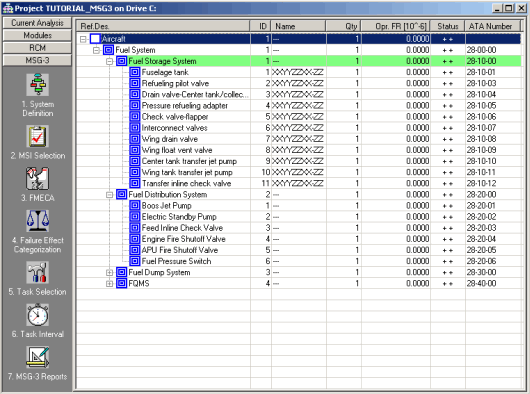RAM Commander MSG-3 module is used by aircraft manufacturers or aircraft operators (airlines) to perform aircraft Scheduled Maintenance Development analysis according to Air Transport Association (ATA) Maintenance Steering Group 3 (MSG-3) document.
• Structural Analysis
• Zonal Analysis
• L/HIRF Analysis (Lightning and High Intensity Radiated Field Analysis)
RAM Commander supports all 4 analysis methods and provides computerized multi-user way of performing the analysis, while all input data is stored in the database and printed out using customizable MS Word reports.
All 4 types of analyses use the same database, share common information and supplement each other; however, any type of analysis may be performed separately.
According to ATA, the ATA MSG-3 publication outlines a decision-logic process for determining initial scheduled maintenance requirements for new aircraft and/or power plants. This document presents a means for developing maintenance tasks and intervals acceptable to regulatory authorities, operators and manufacturers. The analysis has the objective to maintain an inherent safety level and to achieve an optimal balance between maintenance costs and reliability.
MSG-3 Module Main Features
• Intuitive step-by-step procedure
• Integration with Reliability and FMECA analysis modules
• Interactive decision diagrams
• Final report generation is MS Word
• Customizable MS Word report template
The MSG-3 module is integrated with RAM Commander Reliability and FMECA modules.

The MSG-3 module guides the user through the decision-making process with the help of interactive decision diagrams taken from the standard:

As an output of the procedure user gets final report generated in MS-Word with all required data. Report is generated based on customizable MS Word template; user may change the template design.

